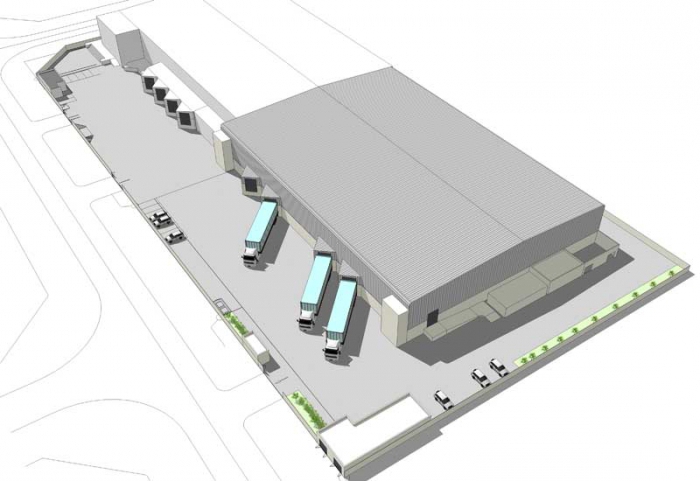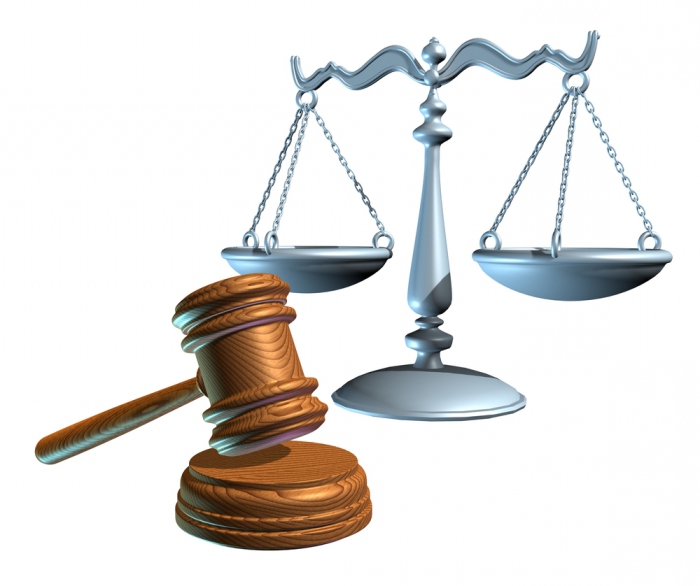Many Russian enterprises have experience in concluding real estate sublease agreements. What are the features of the corresponding type of transactions? What sources of law govern the procedures for their conclusion? How do property owners participate in such agreements?
What is sublease?
Sublease is a type of legal relationship provided for by the Civil Code of the Russian Federation, in which the counterparty of the property owner, who has concluded a contract with him for the rental of premises, signs a new lease agreement with a third party. Moreover, the law does not expressly prohibit, for example, an increase in rents under a new contract. Therefore, sublease of office, workshop, warehouse, garage and other premises is a common phenomenon in business.
Sublease in business: legislative aspect
The concept of sublease, as we noted above, is enshrined in the Civil Code of the Russian Federation. Several articles of the Code provide for a similar type of legal relationship. They are especially relevant, therefore, for the practice of relations between business entities: enterprises, concluding “primary” lease agreements for premises, then rent them to their counterparties more expensive. The subjects of transactions in this case are often commercial real estate. That is, sublease of non-residential premises is a phenomenon that is characteristic mainly for the sphere of entrepreneurship.

All the necessary provisions are fixed in the legislation of the Russian Federation, according to which enterprises that have taken real estate in sublease can themselves act as subsequent lessors. And their counterparties, who get the property at their disposal, also have the right to hand it over - the chain of legal relations, as some lawyers believe, can theoretically be very long.
Sublease Terms
At the same time, many lawyers pay attention to the provisions of Article 615 of the Civil Code of the Russian Federation. It says, in particular, that for the sublease of real estate, the consent of its original owner is necessary. What does this mean in practice? If the company, therefore, entered into a sublease agreement with the counterparty without the consent of the owner of the property, then this kind of transaction, according to lawyers, should be considered invalid.

At the same time, as many experts note, article 615 of the Civil Code of the Russian Federation does not explicitly say how the property owner must give consent for subsequent operations with property in the form of sublease (and further along the chain, if required). Therefore, lawyers recommend prescribing the appropriate condition in the “first level” lease agreement directly with the owner. It turns out a lease with sublease as one of the points. Less desirable, but, according to experts, in some cases it is permissible to draw up additional agreements to the main contract. In accordance with this document, the property owner can grant the right to the counterparty, if necessary, to conclude a sublease agreement with a third party.
Contract Dependence
Assume that the owner of the real estate has allowed the counterparty to conclude sublease agreements. But what about an entrepreneur, if the “first level” contract has terminated for any reason - its term has ended, the owner of the premises has found legal grounds for terminating the relationship?
Lawyers note that sublease of non-residential premises is considered a derivative contract, depending on the "primary". Thus, if the main contract is terminated, then the one that the tenant concluded with his counterparty is immediately canceled.It can be noted that the relevant provisions are enshrined in Article 618 of the Civil Code of the Russian Federation. Thus, sublease of non-residential premises is possible only within the validity of the main contract of the tenant with the owner of real estate.

If we examine the Civil Code of the Russian Federation for any concessions for the subtenant, then we can also pay attention to one of the provisions of Article 618.
The right to a new contract
It states, in particular, that upon termination of the “primary contract”, the tenant’s counterparty has the right to contact the owner of the real estate to conclude, in turn, a new contract. True, this is possible only within the time limits specified in the first contract. However, as noted by lawyers, in practice it often happens that the initial term of the “primary” contract is sufficient from the point of view of the needs of the sub-tenant.
Thus, the law provides a mechanism in which sublease of non-residential premises can be transformed into a full-fledged rental. For this, the primary tenant and the owner of the property must terminate the “primary” contract. After that, the subtenant has the right to "swap places" with the original tenant of the real estate. The question arises: "How can such a sublease right be implemented in practice?" Consider the relevant aspect.
How the tenant gets a “boost"
So, we have determined that a counterparty-tenant of an enterprise that has entered into a “primary contract” with an owner of a property to rent an object can legally issue a full-time lease of non-residential premises. The first step that a company needs to take to exercise the appropriate right is to contact the owner of the property with an offer. It should express the intention of the legal entity to rent the premises, as well as the basic conditions of the subsequent lease.
In turn, the owner of the property is required by law to accept this offer. If he does not, then, according to Article 445 of the Civil Code of the Russian Federation, a subtenant who may be left without the premises he so much needs can go to court. The subject of the claim will be the compulsion of the property owner to conclude an appropriate contract. As many lawyers have noted, judicial practice as a whole testifies to the tendency of courts to take the side of subtenants.
Consider an example illustrating the above mechanism.
Subtenant and owner of real estate: practice of interaction
Let's say Propeller LLC owns a cable production workshop. IP Ivanov A. B. rented this workshop for a period of 3 years. The purpose of the relevant transaction of the entrepreneur is to open on it his own line for the production of cables under his own brand. However, there was a collapse of the national Russian currency, and IE Ivanov A. B. considered that it was unprofitable to open production because of the rise in price of raw materials needed for cable production. However, he turned to Ivanov state enterprise "Gidrokabelmontazh", in the warehouses of which accumulated enough raw materials, but which urgently needed a workshop for the production of cable. Ivanov considered that he had a good opportunity to earn money by subleasing the premises at higher rates than in the contract with LLC Propeller. State-owned enterprise agreed. Propeller LLC has agreed.
As a result, the following subjects of legal relations took shape. Firstly, it is LLC Propeller, the owner of the workshop. Secondly, this is the "primary" tenant - IP Ivanov AB Thirdly, it is its counterparty and, at the same time, the subtenant - the state-owned enterprise Gidrokabelmontazh.
The subtenant brought equipment to the workshop and began production. But then, disagreement arose between FE Ivanov A. B. and the management of Propeller LLC over the correctness of concluding a lease agreement. As a result, the company-owner of the workshop filed a lawsuit against the businessman, who sided with the plaintiff. The contract has been canceled.
The lawyers of Gidrokabelmontazh decided to use the legal right to conclude a lease contract with LLC Propeller directly, thanks to the provisions of the Civil Code of the Russian Federation. They made an offer, where they offered to pay the same amount to Propeller LLC as they directed against the obligations of the sub-lease agreement to SP Ivanov B. The company-owner of the workshop, on the one hand, was obliged to accept the offer - according to the Civil Code of the Russian Federation, another, she did it with pleasure, as it became possible to receive more revenue from the rental of the workshop. Moreover, it is entirely possible to assume that Propeller LLC suggested that Gidrokabelmontazh conclude a new, longer contract.
How to be counterparty subtenant?
There is another interesting nuance regarding the type of legal relationship under consideration. As we noted above, the lease of non-residential premises can form a sequential chain of transactions. At the top step is the tenant’s agreement with the property owner. Next is the sublease. According to it, the “primary” tenant signs the relevant contract with his counterparty. After that, a secondary sublease can be made, etc. That is, a scenario is possible in which Gidrokabelmontazh will hand over the workshop to some other manufacturer, say, Connectmetallist LLC, having received permission from IE Ivanov A. B., unless, of course, by that time he had not yet entered, as it follows in our scenario described above, in disagreement with LLC Propeller.

We examined the nuance in which the counterparty can legally take the place of the “primary” tenant. However, is there such a right for an enterprise that acts as a “secondary” sub-tenant, being, relatively speaking, one link further from the property owner?
Lawyers say that Russian law does not explicitly provide for such a mechanism. It turns out that the rights of the “secondary” sub-tenant are not as strongly protected as in the case of the counterparty who entered into an agreement with the “primary” tenant. And this is despite the fact that the “secondary” sublease is a procedure that is not prohibited by law.
Double sublease: specifics
However, some lawyers pay attention to the wording of Article 6 of the Civil Code of the Russian Federation. It says that in situations where civil relations cannot be directly resolved due to the lack of relevant legislation, and the practice of business practice has not yet been formed, the norms are applied within the framework of the analogy of the law. And in this case, in principle, the “secondary” subtenant may try to present to the “primary” tenant a request to renegotiate the contract so as to continue to use the property.

But in practice, as lawyers note, this is possible only when the subtenant promptly requested the signing of a “direct” contract with the property owner. If the counterparty of the "primary" tenant was inactive, then all "subordinate agreements" in the general case cease to be valid. Therefore, Connectmetallist LLC should be careful in concluding contracts for which the real owner of the property is several levels higher than the actual landlord.
At the same time, some lawyers say that it is possible to interpret the terms of sublease as a mechanism in which "downstream" counterparties can still count on a new contract with the property owner - precisely because of the possibility of applying the rules as part of the analogy of the law.
Sublease agreement structure
What should a sublease agreement look like? In principle, its structure as a whole is very similar to the corresponding contracts providing for direct interaction between the tenant of the real estate and its owner. Consider the specifics of the relevant agreements, under which a sublease is drawn up, an example of the structure of these contracts.
As with most other civil transactions, the type of contract in question contains general provisions. In them, lawyers recommend the use of the term “sublease” - it, as we have defined above, is quite official, it is in the conceptual apparatus of relevant legislation. The general provisions for the type of transaction under consideration are basically the same as for standard lease agreements - the owner completely assigns the right to use the property to the tenant, ensures that the property is not pledged, etc. The contract is valid for the duration of the agreement.

The next paragraph of the agreement is the obligations of the parties. Everything here is almost the same as if a regular lease was concluded. The deadlines for the transfer of real estate to the tenant are prescribed, if it is required - the use of the object for that purpose, the obligations of the counterparty to the property owner to maintain the premises in order, etc.
Further, the terms of payment are usually included in the contract, as well as the settlement procedure. As a rule, the term indicated by the subtenant of the relevant payments is indicated - usually before the 5th day of each month, the tenant's right to collect the debt is stipulated. Included are provisions on the payment of utilities, etc. In general, everything is the same as with the "primary" lease of non-residential premises.
The next paragraph of the contract is the responsibility of the parties. The wording here is also fairly standard. This is the obligation of subjects of legal relations to pay penalties, fines, etc.
The sublease agreement also prescribes the conditions for amendment, termination or termination of the relevant contract. Usually they are associated with the regularity of making payments, as well as, as we noted at the beginning of the article, the delivery of property for subsequent lease in favor of third parties without the consent of the lessor.
Sub-lease agreements, like many other types of contracts, may have special conditions. They may reflect, for example, the fact that possible inseparable improvements the property becomes the property of the lessor. Also, a provision is usually fixed whereby the subtenant has the right to continue to use the property, even if the ownership of it passes to third parties.
Among other conditions of the contract, which are also usually prescribed - those that, for example, govern, in addition to the previous wording, options for implementing improvements in the structure of the object. Such as, for example, overhaul.
State registration of a sublease is generally not required. At the same time, as we noted above, the current tenant must have the written consent of the owner of the property for subsequent transactions, the subject of which is letting the corresponding object. The types of activities of firms entering into such transactions can be any. If the parties sign an agreement by which the premises are subleased, the company’s OKVED and other attributes characterizing the profile of the organization from the point of view of the business sector do not matter.